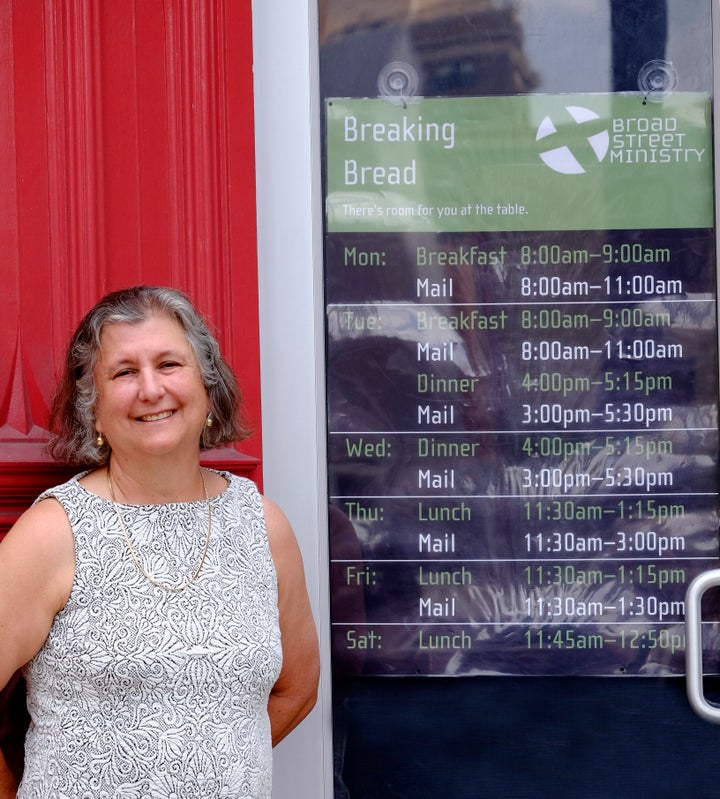
When the heater gave out at Broad Street Ministry last December at the start of the Philadelphia winter, it should have meant an end to that non-profit’s weekly hospitality to hundreds of people without homes. Non-profits typically don’t have $250,000 in the ready for such emergencies. But instead, Laura Kind McKenna organized two foundations that she is part of to provide a joint loan. Both foundations had given grants to BSM in the past, knew the organization well, and understood that this was a critical investment for BSM and one that matched their own missions.
This loan was exceptional to foundation practices. First, it was not a grant. More significantly, it came out of the foundations’ endowments. It’s an investment for both foundations.
Most foundations follow the IRS rules by annually distributing 5% of their assets to their missions, which means paying for grants to non-profits, plus their own overhead and fundraising expenses.
Most foundations also follow an age old practice of handing the other 95% over to an asset management firm in hopes that those funds grow quickly in order to provide a good 5% for mission the following year. These funds are not typically invested in heaters. Foundation staff and board members frequently have no idea how these funds are even invested. There is no connection between those investments and the foundations’ missions. A proverbial firewall exists between the 5 percent and the 95 percent.
A 2007 expose of the Gates Foundation in the L.A. Times demonstrated the utter absurdity that this firewall can create. Looking closely at the Gates’ mission and then at its endowment holdings, one would think Batman’s Joker had carefully plotted to make the investments work as hard as they could against the mission. The Gates Foundation was, for example, advocating making drugs affordable to persons with HIV and AIDS, and yet it held substantial investments in pharmaceutical companies that wouldn’t budge on the price of these drugs.
The real significance of the expose was not the contradictions of the Gates Foundation alone but the inadvertent hypocrisy of the whole foundation world, from the biggest to the smallest. In this foundation realm, one hand awards grants to improve the world as the other makes investments that harm it.
As an individual donor, would you contribute to an organization with a mission to cure cancer if it invested in tobacco companies? Or one that fights pollution while it invests in companies responsible for oil spills? Certainly not knowingly, but the facts we need to make good decisions are shielded from our view.
Consider the role of popular charity rating sites. Currently, they focus on and analyze program income and expenses through lots of pie charts and short narratives, but you would never know from reading these reports that endowment investments could be missing from the story – nor what story that would tell.
Happily, the Joker has some articulate and forward thinking opponents in this endowment issue. The F. B. Heron Foundation and several others have blazed a trail aligning their endowments with their missions. Their funds are invested to actively work on their missions. Beautifully, they have also put an old myth to rest by matching or outpacing the financial returns of traditional stock and bond portfolios WHILE matching mission. Batman and Robin can have their cake and eat it, too.
But old paradigms die hard. Foundations are in essence asset management companies doing a bit of charity work. The vast majority have yet to take as much as a baby step out of traditional stocks and bonds. Fear of investment jargon and the unknown seems to win the day.
Meanwhile, foundations work hard to sell us their missions through great taglines. You hear them often, but ask those foundations if they put their own money where their missions are.
The Divest/Invest Movement is taking some foundations by the hand to get them out of Big Oil and into green energy. Excellent. But no reason we can’t raise the bar higher to divest and invest all the way into missions.
My dear late bosses, Hal & Norma Taussig, set up the Untours Foundation 25 years ago to have its entire, modest endowment in hand selected businesses that create good jobs. Ranchers in a former life, they naturally saw the pragmatism of using all the tools in their barn to build their goal of a healthy and inclusive economy.
The heater at Broad Street Ministry remains a shining example of how easily steps can be taken to match endowments to missions. Laura Kind McKenna keeps shaking her head as to why this all feels so hard and other worldly to her foundation peers. In trying to inspire even a baby step, she has taken on a modified Nike tag line: Just do something – anything!
